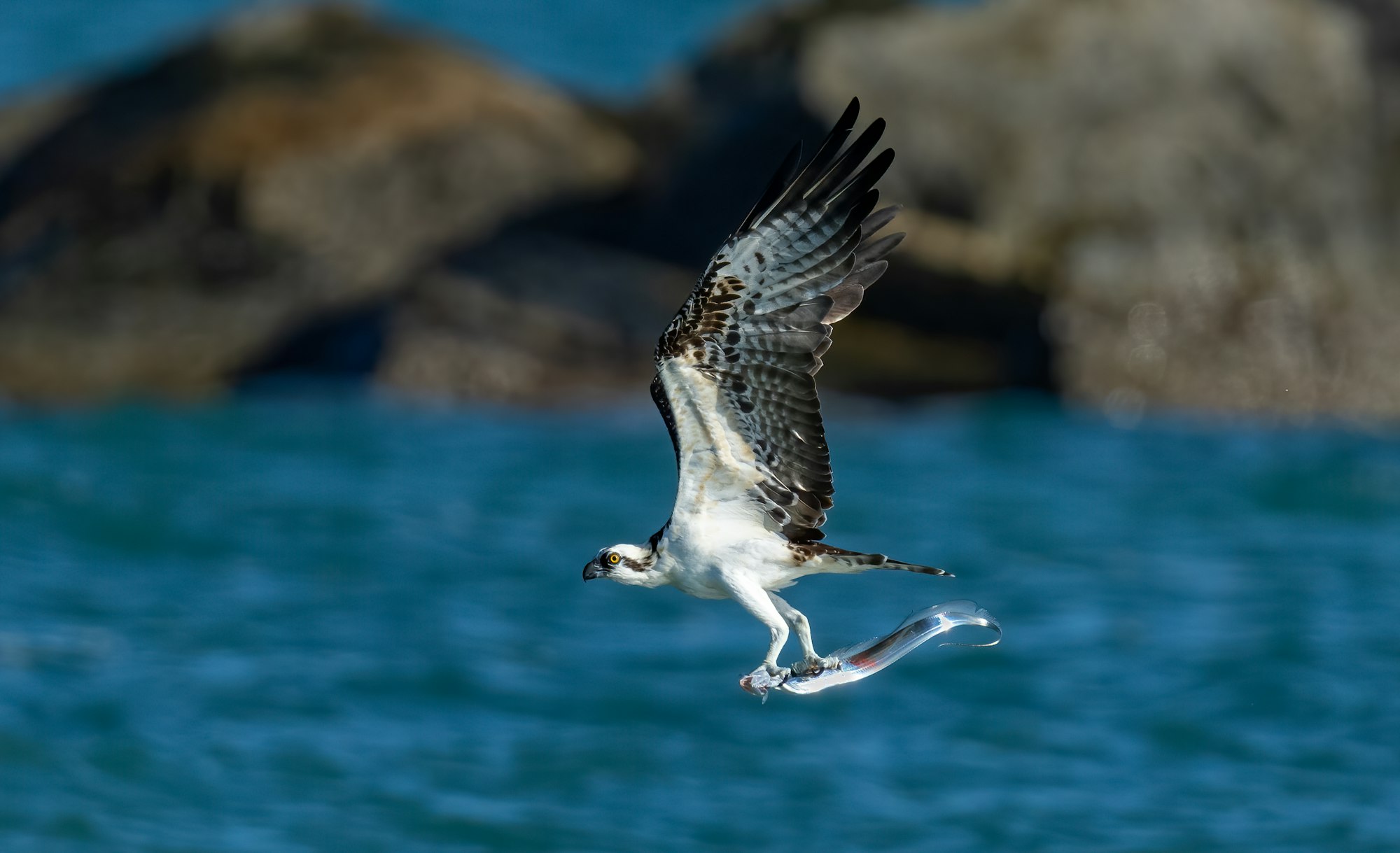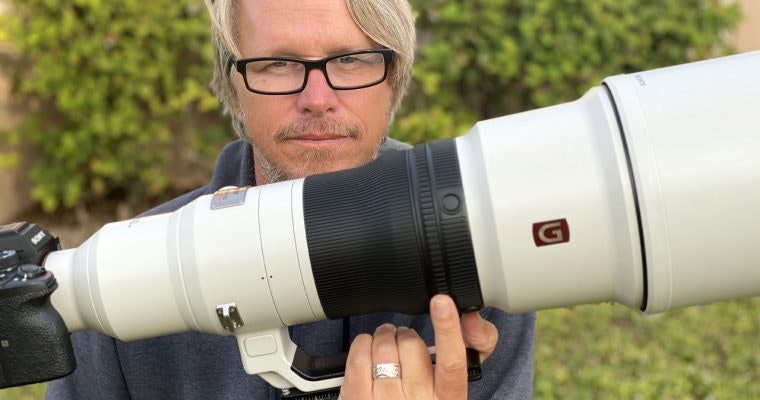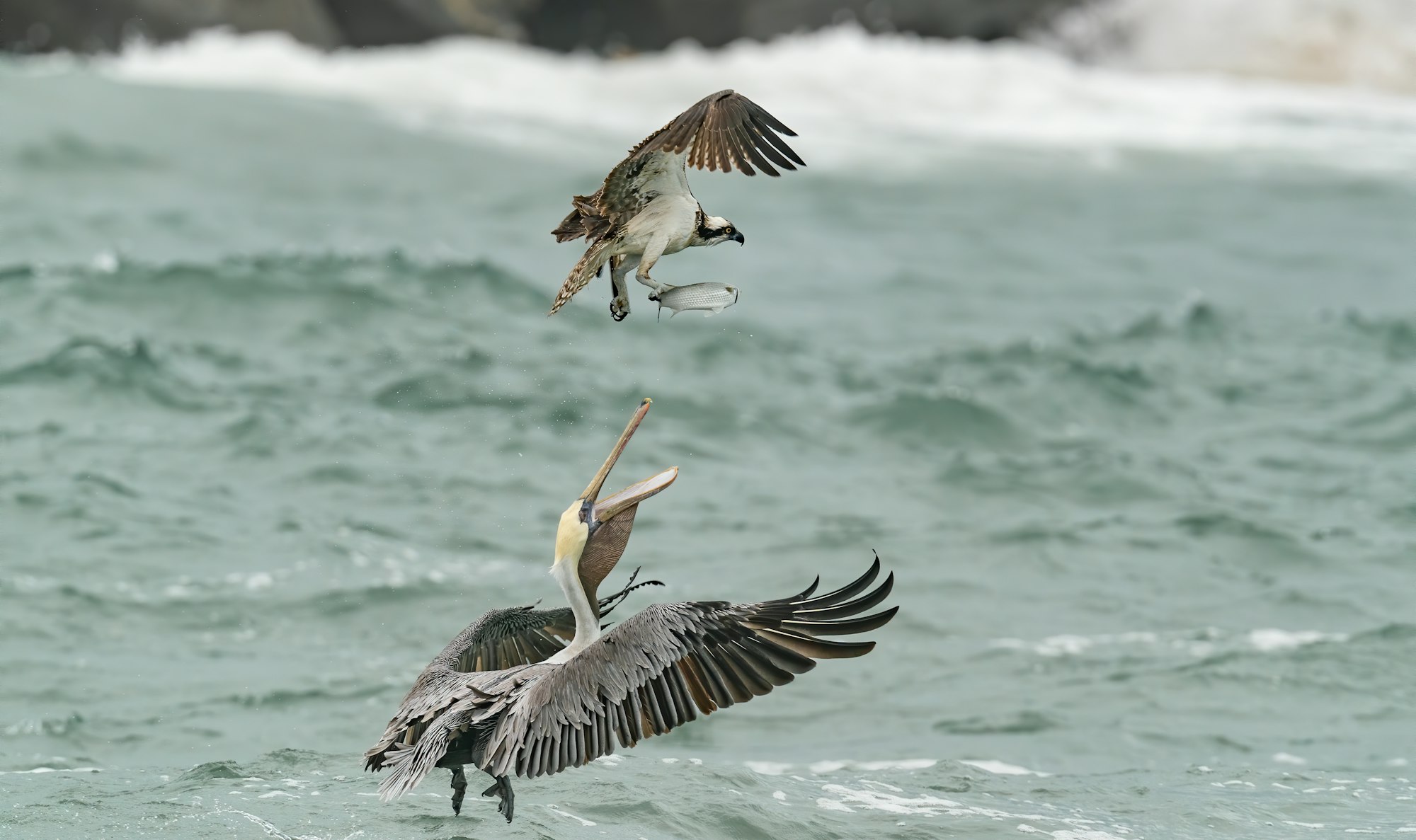A photographer’s paradoxical paradise

Sharks exploding from the water to catch mullet in midair. Pelicans unexpectedly gobbling bonnethead sharks. Avian splendor. Unfolding ocean drama. Mark Smith has been documenting the fascinating birds and marine life at Sebastian Inlet for five years and sharing his work with the world.
When conditions are favorable, scores of photographers line South jetty at Sebastian Inlet, their bazooka-sized lenses trained on osprey dive-bombing for breakfast. Talk to a few of the regulars and they agree that Mark Smith’s photos and videos are, as one woman put it, “off the charts.”
Smith, a professional environmental videographer and photographer, travels the world to ply his craft but he heralds Sebastian Inlet as one of the best locations in the country for wildlife photography.
“Early in the morning and late in the afternoon, Sebastian Inlet fills up with wildlife,” says Smith, a Fellsmere resident and friend of Sebastian Inlet District. “You never know what the day will bring.”

Patience — a lot of it — and a keen eye have served Mark Smith well. His portfolio includes birds and landscapes of Colorado, the Grand Tetons, Costa Rica and even New York City. However, Sebastian Inlet offers unparalleled opportunities to blend artful images that tell stories, he says.
“For example, it’s difficult to get close to a reddish egret, but in the morning near the swimming area they’ll come as close as two to three feet of you,” Smith says. “The black skimmers arrive later in the afternoon when the lighting is exceptionally good. If you time it correctly, your photos can be fantastic.”
Fall and winter, which coincides with the arrival of wintering birds, is Smith’s favorite time to shoot the inlet. Day after day, from sunup until sundown, he shoots thousands of photos and countless hours of video of nature at its most raw and supreme.
“The past two years of the fall mullet run were the most intense I’ve ever seen,” he said. “Huge tarpon were chasing them. Sharks were jumping 20 feet in the air to feed. It was mind-blowing.”
The big draw for Smith and most other wildlife photographers is the osprey breakfast buffet.

There can be 30 ospreys in the sky queueing up to dive for fish,” he says. “I’ve never seen anything like it anywhere else. You never know what they’ll pull out of the ocean. Sometimes they’ll get two or three fish at a time. You might see an osprey carrying a huge flounder. It looks like a magic carpet flounder for osprey. It’s dumbfounding to see. Birds know this is a good place to get a feast while they can.”
Based on his conversations with other shutterbugs, Smith says the secret is out about Sebastian Inlet.
“Some photographers are so die-hard that they’re buying houses so that they can come here daily to shoot.”
“There’s really no place like Florida,” he said.
See Smith’s work here



